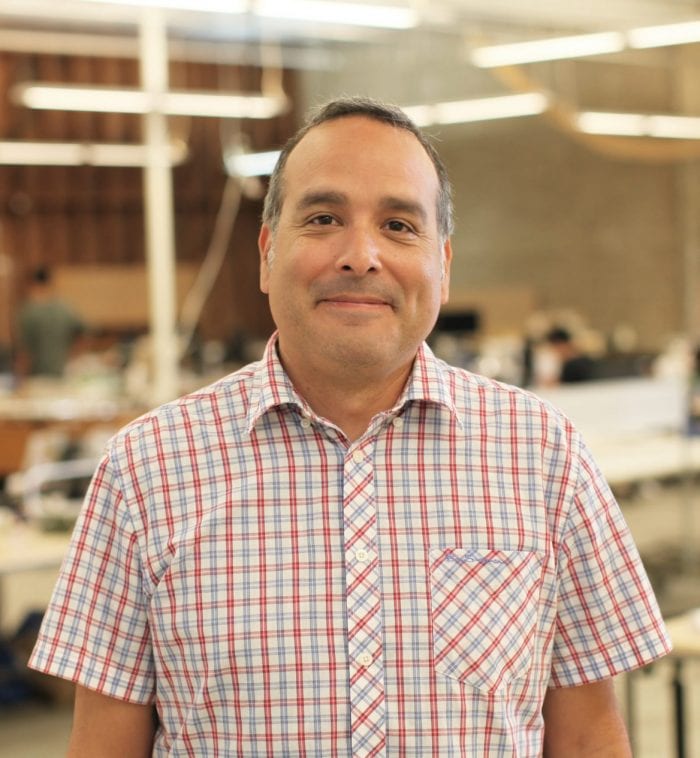Jose Parral on the Power of Curiosity
Jose Parral is a designer and Chair at Woodbury University’s San Diego campus. He holds an MA in Landscape Urbanism from the Architectural Association School of Architecture in London 2001, recipient of the Kate L. Brewster Rome Prize in Landscape Architecture, American Academy in Rome 2007, and visiting Professor at Ohio State School University Knowlton School of Architecture 2005-2006. We caught up with Jose to discuss his background in landscape, teaching in San Diego, and the power of curiosity.
Interview with Jose Parral

Why did you choose to study landscape architecture?
My interest really started from working with my dad as a kid, he was a gardener. It developed into this fundamental interest of plants and design. As I took architectural courses and eventually receiving my undergraduate degree in landscape architecture, I realized it was how plants, topography, and design, from small to global scales have a huge impact on how we live with each other and the planet. Basically, how can I change the world for the better from a garden to a hemisphere.
What classes do you teach and which is your favorite?
I teach all over the place, but mainly focusing on history/theory and courses related to urban design. My favorite so far has been the Urban Design Studio 4b, as it’s really an opportunity to discuss and research relationships between interior/exterior space, designing at different scales and at times working with civic agencies. Because it is at the end of the students 4th year, it’s also a way for students to begin thinking about their interests and focus towards their final degree project in the following year. For me it’s an exciting moment to discuss and assist with developing their interests.
What do you enjoy most about living and teaching in San Diego?
I’ve always felt that San Diego is at a critical moment of transformation and wanted to be a part of it. Academically, I see San Diego at a crossroads between the social/political and the natural/ecological. From north to south we are in-between Los Angeles and Tijuana, and from east to west we are in-between the desert mountains to the ocean. So, there are so many issues that emerge in relation to climate change and social conditions. I believe San Diego is a rich resource for both students and faculty. These crossroads are also the reason why I enjoy the city, beaches, Tijuana, and the desert.
Architects often face questions of narrowing project scopes. How do you think architects and designers will adapt ways of practicing to advance the design professions?
The capability to be constantly looking beyond our own points of view and understanding the dynamics of nature, I believe will allow designers to not only deal with the narrowing of project scopes, rather expand the field of design into other fields such as politics or ecology. That is where I think the power of landscape architecture rests. When designing at larger scales; politics, sociology, ecology, and other disciplines all have a larger say in the outcome of the design.
How has your academic or professional experiences shaped your teaching?
My professional experiences have made me realize what I want to instill in students that is a constant curiosity even in the most mundane tasks, as they become possibilities to challenge and perhaps change the status quo. Academically, I want to create an amazing environment to learn from each other and to develop a critical curiosity and imagination.
What would you hope students take away from your classes?
It’s this ability to construct their own problems. Solutions will always be there and there will be so many ways for solving problems. The ability to construct problems is actually something very difficult, as we have always been taught to only solve problems, therefore if I can help to develop this ability as a goal to foster their individuality. If I can achieve this, I believe we will have a future that is rich and full of variation.
What advice would you give to young designers who aspire to follow a similar career path?
Try to see as much of the world as you can. Be constantly listening and learning and find inspiration in things beyond your own discipline.